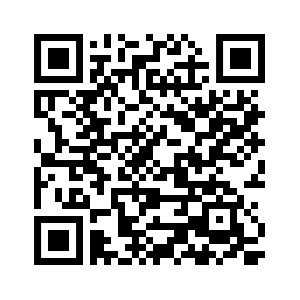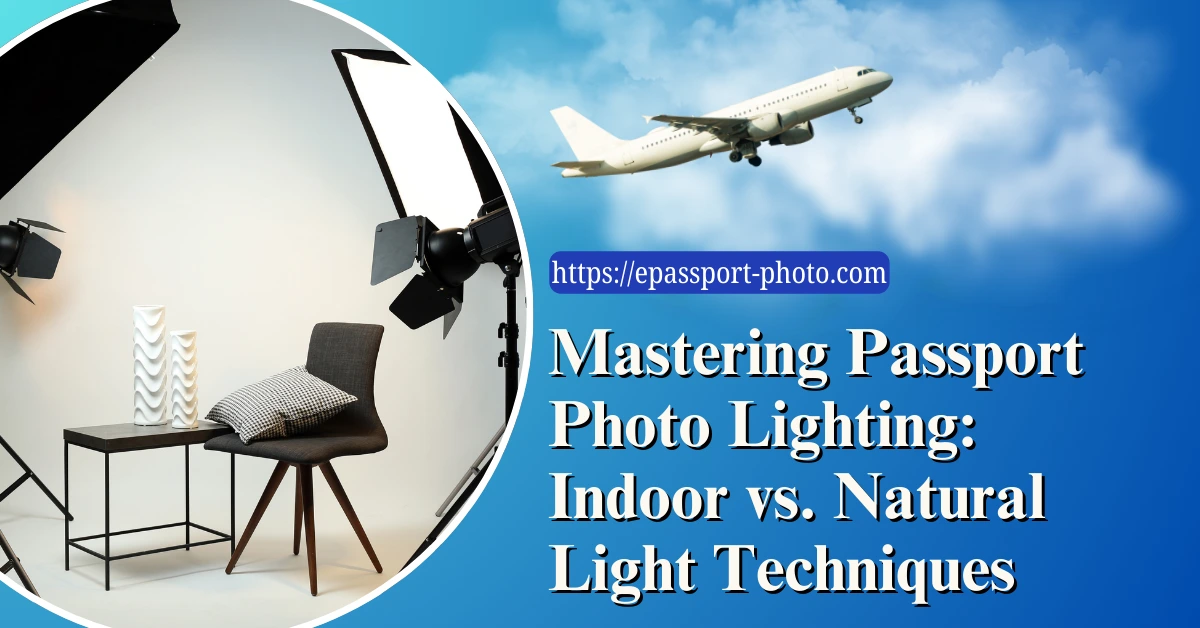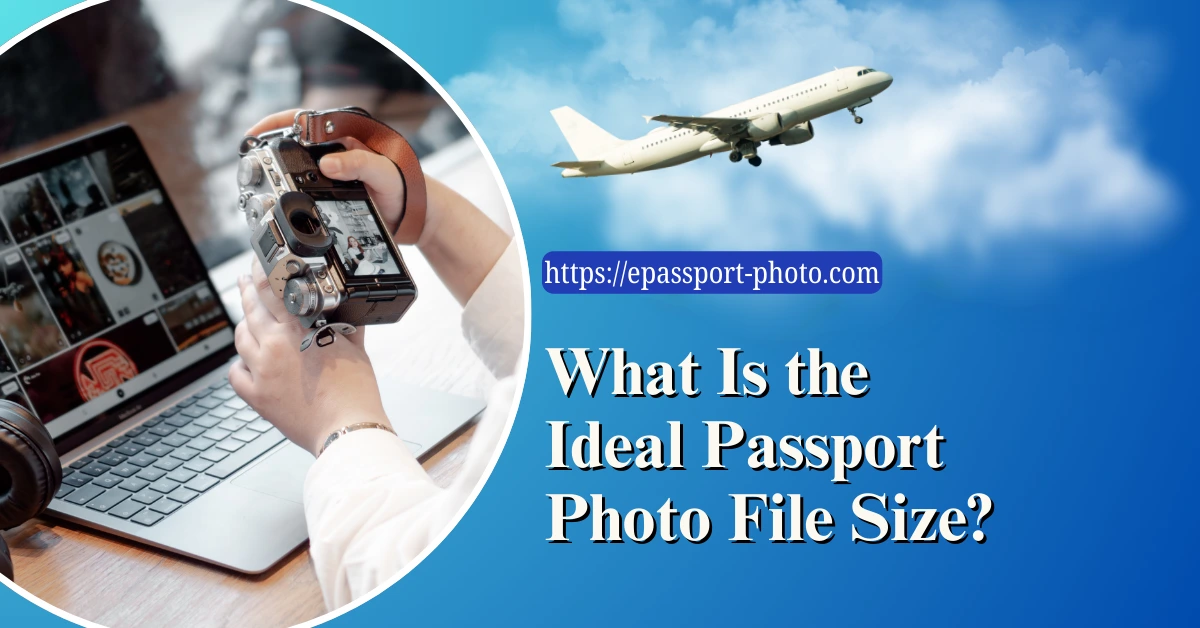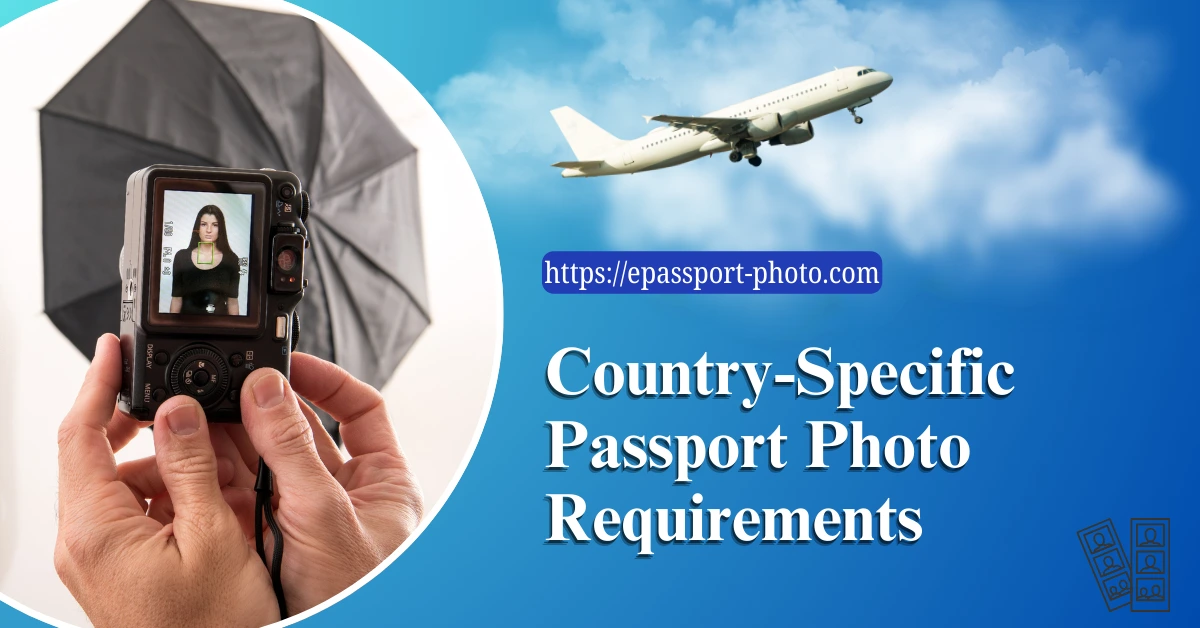Right lighting is a basic necessity while taking a passport photo, as it can make or break the deal. Poor lighting can create shadows, distort colors, and make your photo look unprofessional.
In this blog, we will guide you through the best passport photo lighting techniques to make sure your passport photo looks perfect.
We will also explore how to get the best results using both indoor and natural light, so you can choose the method that works best for you. Whether you are taking your photo at home or using a professional setup, these lighting tips will help you meet passport photo requirements with ease.
Visit our homepage for more tips on perfecting your passport photo, and get ready to shine in your next photo!
1. Passport Photo Lighting Requirements
A) Importance of Proper Lighting While Taking a Photo
Proper lighting is a must for a passport photo to represent your face clearly and accurately.
Good lighting eliminates shadows on the pictures and provides a true-to-life image. It helps in meeting the strict requirements set by passport authorities, such as even illumination and color accuracy.
Therefore, proper lighting also avoids color distortions and makes your photo look professional.
B) Common Lighting Mistakes
Using harsh or uneven light can cause unwanted shadows.
Poor lighting conditions can lead to color distortions or too much glare.
Using direct sunlight or bright, unfiltered lights can result in reflections or uneven lighting.
These issues can affect the quality and compliance of your passport photo, so it is important to avoid them for the best results.
2. Indoor Lighting Techniques for Passport-Size Photo
A) Choosing the Right Light Source
When setting up indoor lighting for your passport photo, choosing the right light source is very important. Fluorescent lights are mostly used while taking photos as they provide an even light. However, they can sometimes cast a greenish tint.
LED lights are also a great alternative, offering brighter and more natural light without color distortion.
B) Setting Up Your Indoor Lighting
For optimal passport photo lighting, aim for even illumination to avoid shadows and glares.
Position your light sources at a 45-degree angle to your face and use softboxes or diffusers to soften the light and reduce harsh reflections. This setup will surely turn your photo clear and balanced.
Lastly, position your camera at your eye level. This helps capture the most accurate and flattering lighting for your passport photo.
3. Mastering Natural Light for Passport Photos
A) Benefits of Natural Light Passport Photo Lighting
Natural light provides soft and even lighting that improves photo quality.
Natural light reduces the need for artificial lighting adjustments.
Natural light highlights natural skin tones and minimizes harsh shadows.
This makes your passport photo look more professional.
The best time to take photos is during daylight hours when the light is consistent everywhere.
Early morning or late afternoon also offers the most flattering and diffused light.
B) Setting Up Your Space
To make the most of natural light, position yourself near a window where sunlight is good.
This setup provides even lighting without harsh shadows. If the weather or time of day affects the light, use sheer curtains to diffuse the light and maintain consistent conditions.
By adapting to these changes, you can achieve the best possible passport photo lighting with natural sources.
4. Indoor vs. Natural Light Techniques
A) When to Use Indoor Lighting
Indoor lighting is perfect when natural light is insufficient during evening hours or in windowless spaces.
Indoor lights can also be useful for controlled environments where you can adjust light sources to reduce shadows and glare.
This method provides consistent lighting conditions, which are ideal for setting up a reliable photo space.
B) When to Use Natural Light
Natural light is best used when you have access to well-lit windows and want to capture a soft, natural look. It works well in daylight hours, especially in the morning or late afternoon when the light is less harsh.
This technique is perfect for a flattering and natural appearance in your passport photo.
C) Hybrid Techniques
Combining indoor and natural light can provide the best of both worlds. Use natural light as the primary source and supplement with indoor lighting to fill any gaps or enhance consistency.
This approach helps achieve optimal passport photo lighting, balancing the strengths of each method.
5. Additional Tips for Perfect Passport Photos
To perfect your passport photo lighting, follow these additional tips:
Use a Tripod: A tripod helps to stabilize your camera and avoids blurriness in your passport photos.
Check the Background: Ensure a plain, neutral background that contrasts with your clothing.
Avoid Direct Light: Prevent harsh shadows by avoiding direct light sources.
Maintain a Neutral Expression: Keep a natural, relaxed expression for a standard photo look.
Dress Appropriately: Wear simple everyday clothing of solid colors to avoid any distractions.
Review the Guidelines: Follow specific passport photo lighting requirements for accuracy.
Final Say
In summary, mastering passport photo lighting involves choosing the right technique based on your environment and needs. Indoor lighting provides control and consistency, while natural light offers a soft, natural glow. Combining both methods can deliver optimal results.
By setting up your lighting correctly, you can achieve a clear, professional passport photo that meets all requirements.
Apply these tips for perfect lighting for your photos and avoid common pitfalls.
For more blogs and helpful tools for passport photos, visit our homepage.
We are here to help you get your passport photo right!
FAQs
1. What is the best type of lighting for passport photos?
The best lighting for passport photos is even and diffused. Natural light is ideal during the early morning or late afternoon. It provides a soft and flattering effect. If you are using indoor lighting, go for LED lights with softboxes or diffusers to minimize shadows and glare.
2. Can I use a ring light for passport photos?
Yes, you can use a ring light to take a passport photo. It provides even, shadow-free lighting and helps ensure a consistent look. Just make sure that the light is diffused to avoid harsh reflections or overexposure.
3. How far should I position my light source from my face?
You can position your light source about 45 degrees from your face. Place the light at eye level and at a distance where it does not cause harsh shadows or glares. Adjust as needed to achieve a balanced light.
4. What are the common mistakes to avoid when taking passport photos?
Common mistakes include using direct, harsh light, which creates shadows, and using inconsistent lighting sources, which leads to uneven exposure. Avoiding reflective surfaces and ensuring a neutral background also helps maintain photo quality.
5. Is it necessary to edit passport photos for lighting?
While it is best to achieve the correct lighting during the photo session, minor adjustments may be needed to correct exposure or color balance. Ensure any edits do not alter your appearance or violate passport photo guidelines.







